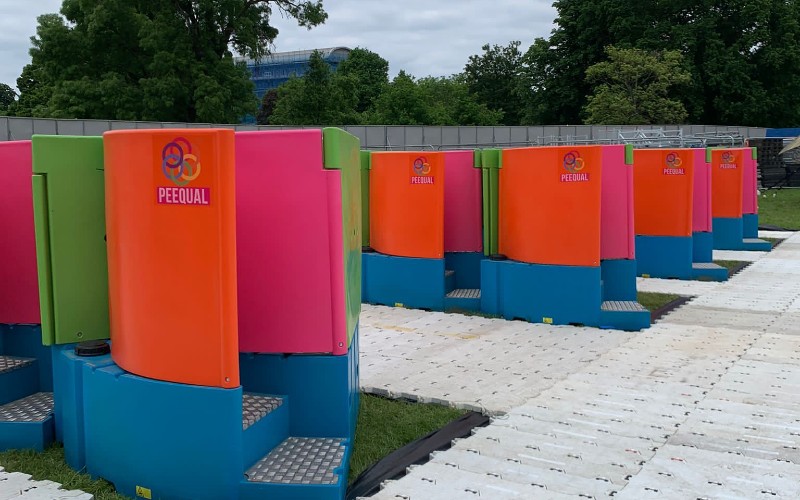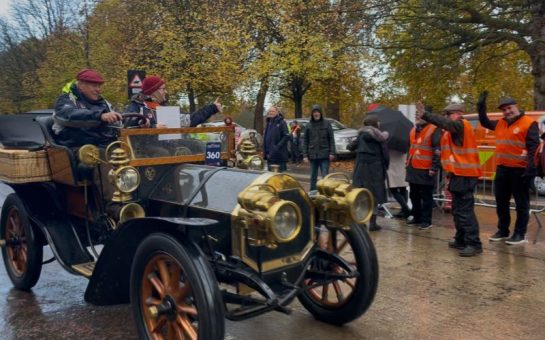Studies show that women on average wait 34 times longer for toilets than men; but two Bristol University graduates have developed female urinals to address this issue head-on.
Amber Probyn, 27, and Hazel McShane, 29, began PEEQUAL as a Master’s research project in 2020, with the task to “solve a real world problem”.
Five years later, 2025 marked PEEQUAL’s most successful season: featuring at major events including Glastonbury Festival, Download Festival, the London Marathon, and Pride, and have just secured £925,000 in funding to expand internationally.
Co-founder Amber said: “We have an attitude of just trying to see how far we go and see what impact we can have.
“Our main aim is tackling unequal access to facilities and valuing women’s time as equal to a man’s time.”
“I think we are all indoctrinated to think this is just how life is — we are expected to wait in long queues as women, but nobody knows why or how to fix it.
Unequal restroom access between men and women is known as ‘potty parity’, and has long been the subject of research and urban planning.
Shawna Lewkowitz, a PhD candidate at Western University, is one such researcher, with decades of experience in civic engagement, city-building and equity work.
She said: “We know from broader research that women wait longer for toilets, and have a greater need to use them than men and that unfortunately urban planning does not account for those differences.
“Cities have been built by men for men and so they reflect those patriarchal dynamics.”
Current laws in the UK require a 1:1 ratio of females to males public toilets, however, even with these regulations, there is still only one female cubicle for every 10 male urinals.
Lewkowitz said: “Having access to a public toilet is not just a ‘nice to have’, or a facility, it’s actually a human right defined by the United Nations.
“But most cities are not meeting these human rights obligations in terms of providing public toilets.
“Obviously when this access isn’t reflected in the way that cities are built, women, trans and gender diverse people are particularly impacted.”
While many researchers and planners have long recognised the issue, few practical solutions have emerged. PEEQUAL, however, has stepped up with their “squat and go” female urinals.
Amber says its facilities are up to three times more efficient than traditional cubicles, providing women with a faster and more practical option in festival settings.
One user, Gen Y, 39, said: “It’s the worst to have to wait in a long line just for a wee (especially when you have music/activity to catch), and this is a game-changer in how easy it is and in cutting down the waiting time for a stall (or worse, a portaloo).
“Honestly, it does make me think how simple it was for men with urinals, and what the rest have been missing.
“It’s just a little less faff in the day-to-day.
“I also think it’s more hygienic, without having to sit down on something, and the open-air design of it means that I needn’t marinate in smells.”
PEEQUAL are uncovering a new demand, as at just one of the company’s six Glastonbury sites, 13,000 women used the urinals between 6 p.m. and midnight on Friday alone.
As Amber said: “It’s always been a need, but now women are realising that this could be an option for them.”
For many women, a trip to the toilet at a festival is more than a solo mission — it’s often a fun, shared experience.
Amber said: “The way we’ve designed PEEQUAL is for that communal experience and to keep that really fun, real empowering safe space that you get in a club toilet.
“When everyone’s in there and it’s beautiful chaos, that is an element that we really wanted to keep in the design.
“You do see that in PEEQUAL, people making friends and waving at each other.
“I love going on site because it reminds me that we have created something that’s another location in the festival rather than just a toilet.”
PEEQUAL is filling a gap by directly addressing the needs of women, but ultimately, represents a temporary solution to a wider problem.
When speaking with Shawna Lewkowitz, she pointed out that the burden of equal access to public toilets should not fall solely on brands.
Lewkowitz said: “Ultimately, the responsibility to address structural inequities in urban design lies with cities and city planners — we can’t let them off the hook if we want to get to the root of toilet inequities and inequities in urban spaces.”





